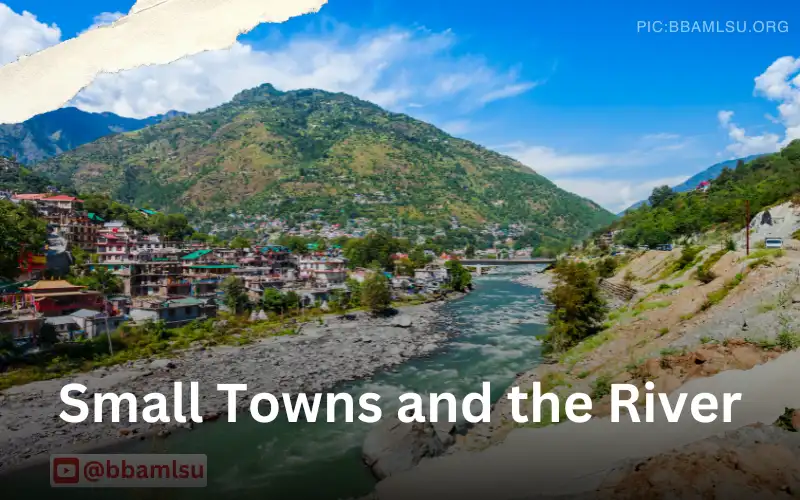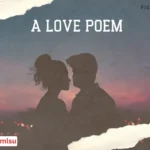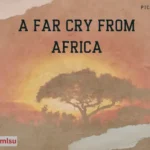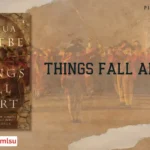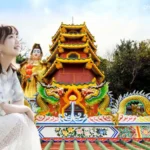Derek Walcott’s poem “A Far Cry from Africa” is rich with imagery and symbolism that reflects the complexity of the poet’s identity and the historical tensions that define his perspective.
Walcott, a Nobel Laureate with mixed African and European heritage, delves into themes of colonialism, violence, and identity through vivid and often contradictory images.
Here’s an in-depth analysis of the various images and symbols employed in the poem:
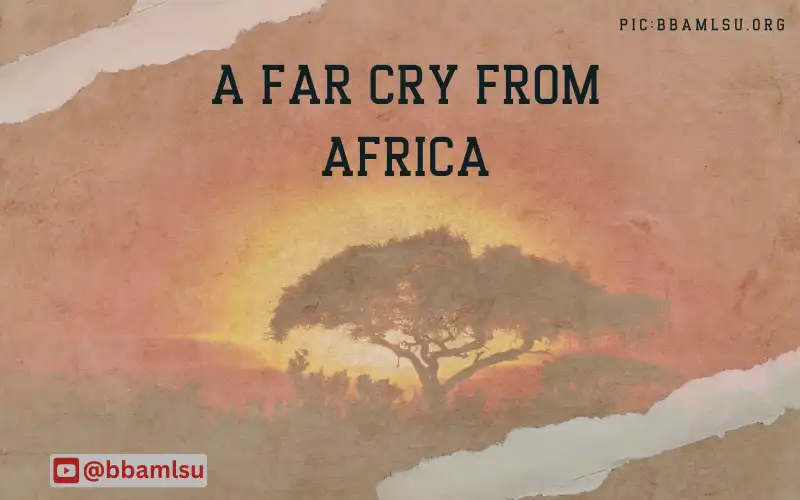
Colonial and Natural Imagery
1. African Landscape:
Walcott begins the poem with an evocative description of the African landscape:
“A wind is ruffling the tawny pelt / Of Africa.”
This personification of Africa as a living creature with a “tawny pelt” emphasizes the continent’s vitality and richness. The “wind” suggests a disturbance, possibly symbolizing the turmoil of colonialism. The landscape is further depicted through:
“Kikuyu, quick as flies, / Batten upon the bloodstreams of the veldt.”
Here, the Kikuyu people are compared to flies, an image that conveys both vitality and a sense of nuisance, perhaps hinting at the colonizer’s view of the natives as bothersome.
The “bloodstreams of the veldt” merges the natural with the violent, suggesting a land bleeding from internal conflict and external exploitation.
2. Animals and Predation:
The poem continues with images of predation, which symbolize the violence and brutality of colonial rule:
“Corpses are scattered through a paradise.”
This juxtaposition of death in a paradisiacal setting underscores the unnatural disruption caused by colonization. Walcott mentions “beast’s” behavior and compares colonizers to predators:
“Only the worm, colonel of carrion, cries: / ‘Waste no compassion on these separate dead!’”
The “worm, colonel of carrion” is a powerful metaphor for colonialism, suggesting that colonial forces, like worms, feed off decay and destruction, treating the dead with indifference.
This image criticizes the dehumanizing and exploitative nature of colonialism.
Symbols of Violence and Conflict
1. Blood and Soil:
The imagery of blood is recurrent and powerful:
“The violence of beast on beast is read / As natural law, but upright man / Seeks his divinity by inflicting pain.”
Walcott draws a parallel between the violence in nature and human conflict.
The “violence of beast on beast” is seen as part of the natural order, but human violence, particularly through colonialism, is a betrayal of humanity’s quest for divinity.
The juxtaposition of “beast” and “upright man” underscores the hypocrisy of colonial justifications for violence.
2. Historical and Mythological References:
Walcott invokes historical and mythological imagery to contextualize the conflict:
“The gorilla wrestles with the superman.”
This allusion to Nietzsche’s concept of the “superman” and the primal image of a gorilla suggests a clash between primal instincts and the supposed superiority of Western civilization.
The image symbolizes the brutal struggle for dominance and the inherent conflict between different cultures and ideologies.
Symbols of Identity and Hybridity
1. Mixed Heritage:
Walcott’s own mixed heritage is symbolized through the conflicted identity presented in the poem:
“I who am poisoned with the blood of both, / Where shall I turn, divided to the vein?”
The metaphor of being “poisoned with the blood of both” signifies the poet’s internal conflict and the torment of reconciling his African and European ancestry. The imagery of blood again underscores the themes of inheritance and identity,
while “divided to the vein” evokes a deep-seated division within the self, suggesting that identity conflict is ingrained and inescapable.
2. Moral and Ethical Conflict:
Walcott grapples with the ethical implications of taking sides in a colonial conflict:
“How can I face such slaughter and be cool? / How can I turn from Africa and live?”
These rhetorical questions highlight the poet’s moral dilemma, torn between his heritage and the horror of violence.
The imagery of “slaughter” contrasts sharply with the notion of remaining “cool,” underscoring the emotional and ethical turmoil inherent in confronting one’s history and identity.
Conclusion:
Derek Walcott’s “A Far Cry from Africa” employs a rich tapestry of imagery and symbolism to explore the complexities of colonialism, violence, and identity.
Through vivid natural imagery, symbols of violence and conflict, and reflections on his own mixed heritage, Walcott crafts a powerful narrative that captures the tumultuous history of Africa and the personal turmoil of a divided self.
The poem’s layered images not only evoke the physical and emotional landscapes of colonial Africa but also resonate with the universal struggles of identity and belonging.



